Moon Monday #67: NASA Artemis concerns, ESA contracts Thales Alenia for future technologies, and more updates
I repeat: To minimize damage in the Ukraine crisis, identify something specific you can do to constructively contribute instead of hollow posting on social platforms. One option is to donate specifically to help people displaced from their homes.
Highlight
At a March 1 hearing, members of the U.S. Congress and watchdog organizations pressed NASA for long-promised details about the costs, management and overall strategy of the agency’s Artemis program to land and sustain humans on the Moon.
Paul Martin from NASA’s Office of Inspector General (OIG) recapped findings from the organization’s November 2021 report, highlighting that a single Artemis launch currently costs an unsustainable $4.1 billion. This figure doesn’t include the tens of billions of dollars already spent on development costs, and more that will be spent. Martin said NASA will spend $93 billion from 2012 to 2025 on Artemis.
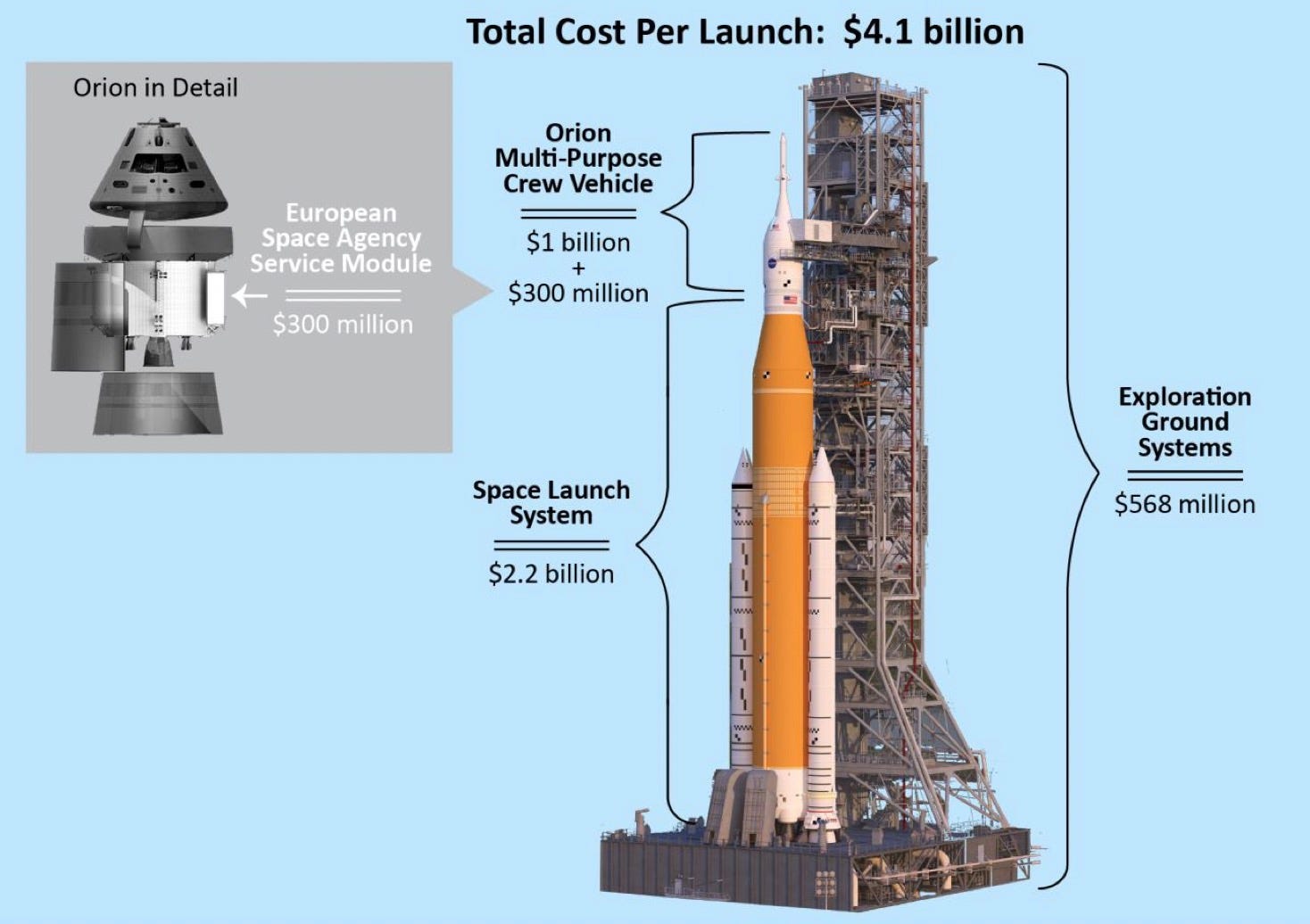
NASA’s obscuring of true costs of Artemis is a concern also previously raised by the Aerospace Safety Advisory Panel (ASAP), a committee that reports to NASA and the U.S. Congress. In its 2021 annual report based on the panel’s frequent and periodic observations of NASA’s operations and interactions with personnel, it noted that Artemis isn’t actually a single program but a massive collection of related programs none of which answer to a common program manager or board. From the report:
There is no clearly defined leader of the enterprise, transparently endowed with the ultimate authority, responsibility, and accountability to direct all Artemis-related programs and ensure full synchronization and integration of effort.
NASA leadership didn’t agree then on how Artemis costs should be tracked, essentially saying that Artemis is a “campaign” of lunar exploration efforts and not a defined program. Now Jim Free, NASA associate administrator for Exploration Systems Development, said he is establishing an “Artemis campaign development division” to run and provide centralized oversight of all Artemis missions, each with a mission manager.
The other concern very few people are talking about but the OIG raised in its January 2022 report is the low number of astronauts NASA has in its corps right now. At just 44, as opposed to over a hundred available during the Space Shuttle’s last two decades, it’s an uncomfortably small number to work with and grow quickly to meet the agency’s simultaneously expanding goals for sending humans to the Moon and maintaining presence in Earth orbit. From the report:
The Astronaut Office is in the process of developing a framework for Artemis training, but this framework has not been formally chartered nor have any Artemis crews been announced. As such, specific mission-focused training for the Artemis II mission—the first crewed Artemis flight—has not yet begun. The Agency could be overestimating the time available to develop and implement the necessary training framework and regimen across key Multi-Purpose Crew Vehicle (Orion), next-generation spacesuits, and Human Landing. Delays in moving beyond the current ISS-focused approach for current and future astronauts increase the risk of delays in developing the necessary training to meet Artemis mission goals.
Exploration
On March 1, Romania signed the NASA-led Artemis Accords for cooperation in lunar and space exploration. Romania is the 16th country to sign the Accords, and the fifth such ESA member after the UK, Italy, Luxembourg and Poland. France has expressed an interest in signing the Accords too but hasn’t yet done so.
As part of its 2022 BIG Idea Challenge, last month NASA awarded a total of about $1.2 million to seven university teams to develop and demonstrate versatile mobile robot prototypes by November 2022 that could be advanced for use in future lunar missions to explore currently inaccessible or difficult areas such as lava tubes, permanently shadowed regions, rocky and steep terrain, and more. The proposed prototypes range from legged rovers of different types to tethered and snake-like mobile robots.
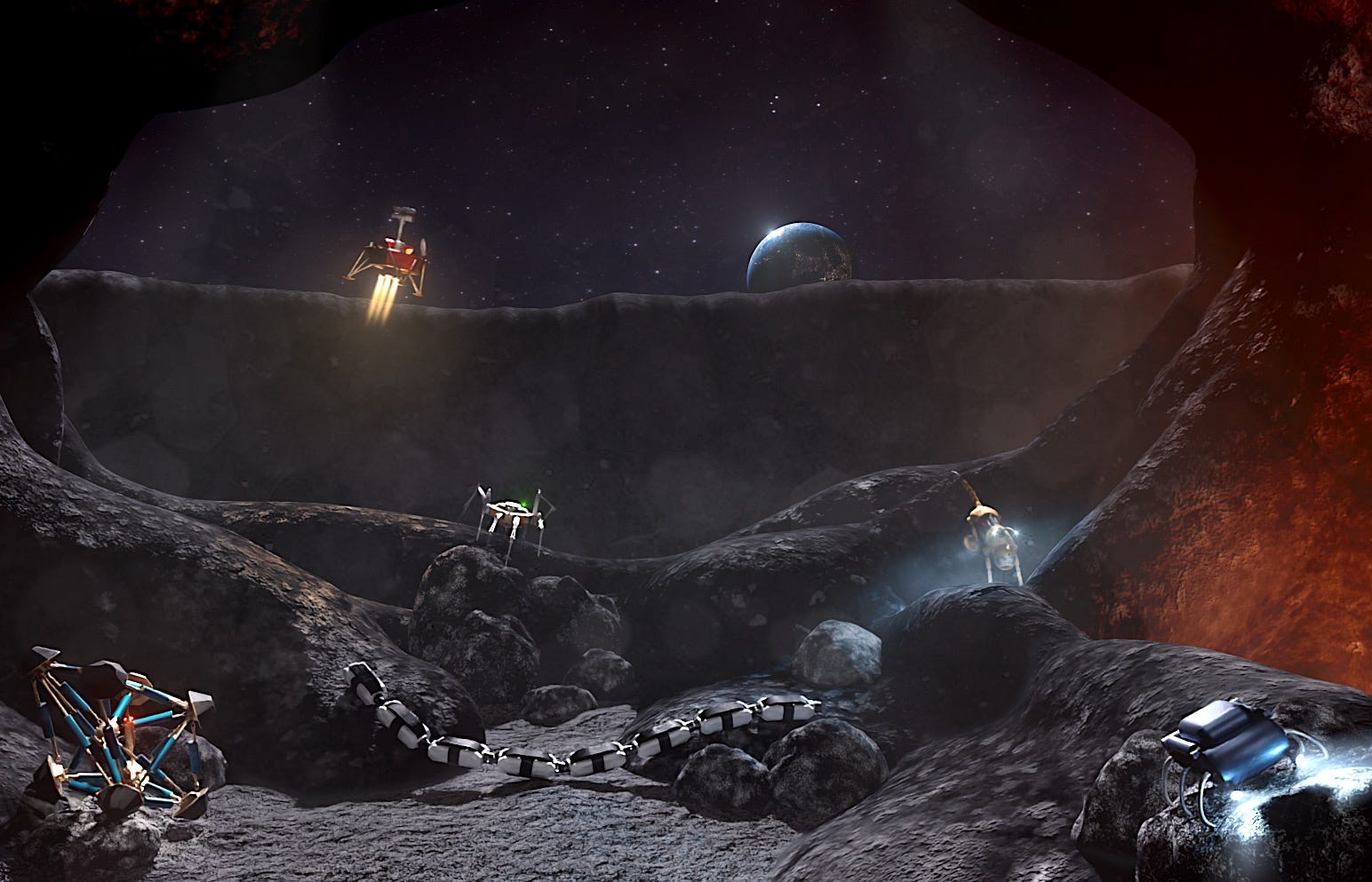
The U.S. Air Force announced that the U.S. military will launch a satellite into cislunar space to identify “potential threats to U.S. activities” as the number of Moon missions increase. Proposals to build this satellite, called the Cislunar Highway Patrol System (CHPS), will open to on March 21 and a contract will be awarded in July. Related: Last month, the U.S. Air Force entered into an agreement with Advanced Space to share data collected by their upcoming NASA-funded CAPSTONE spacecraft, which intends to prove the feasibility of the unique fuel-saving elliptical lunar orbit that the NASA-led Gateway space station will be in later in the decade.
After awarding competing study contracts in July 2021 to Airbus Space and Thales Alenia Space, ESA has now awarded a €1 million contract to a Thales-Alenia-led consortium for developing a demonstration payload that extracts oxygen from Moon rocks. The ESA announcement mentions the payload could potentially ride on the European Large Logistics Lander (EL3), for the design of which too ESA has chosen Thales Alenia Space. ESA intends EL3 to be a “free-standing part of international lunar exploration activities”, designed to support a variety of missions such as large rover explorations, sample return, and aiding NASA’s Artemis missions with cargo supplies. A render on ESA partner OHB’s site places EL3 first launch post-2030, much delayed compared to the originally intended 2027.
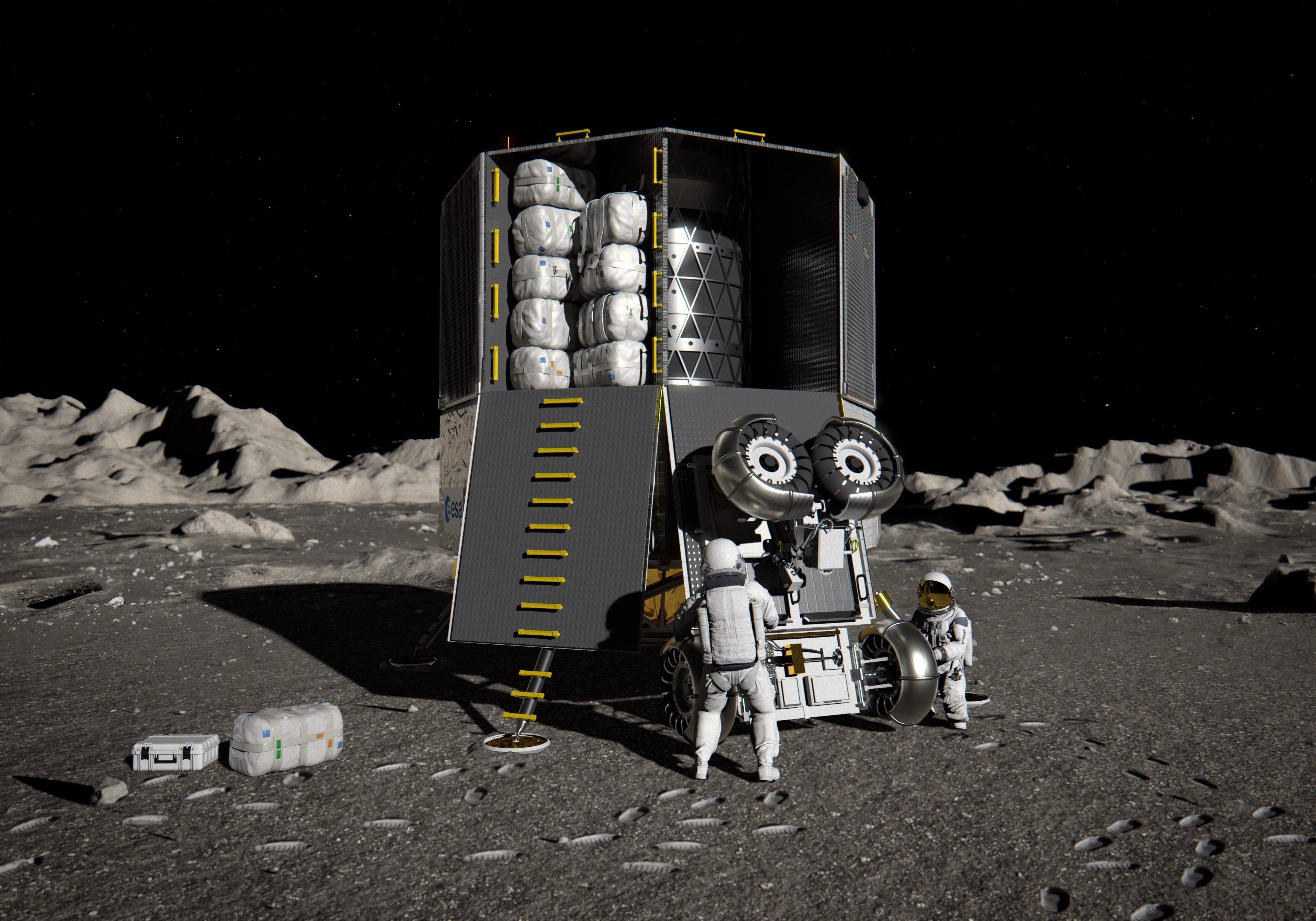
Science
NASA knew future technology would allow scientists to study lunar samples brought by Apollo in new ways to answer new questions, which is why it formed the Apollo Next Generation Sample Analysis Program (ANGSA) initiative to examine specially stored and sealed samples. In February, NASA begun the meticulous, months-long process of opening and studying one such vacuum-sealed lunar sample collected 50 years ago by Apollo 17 astronauts.
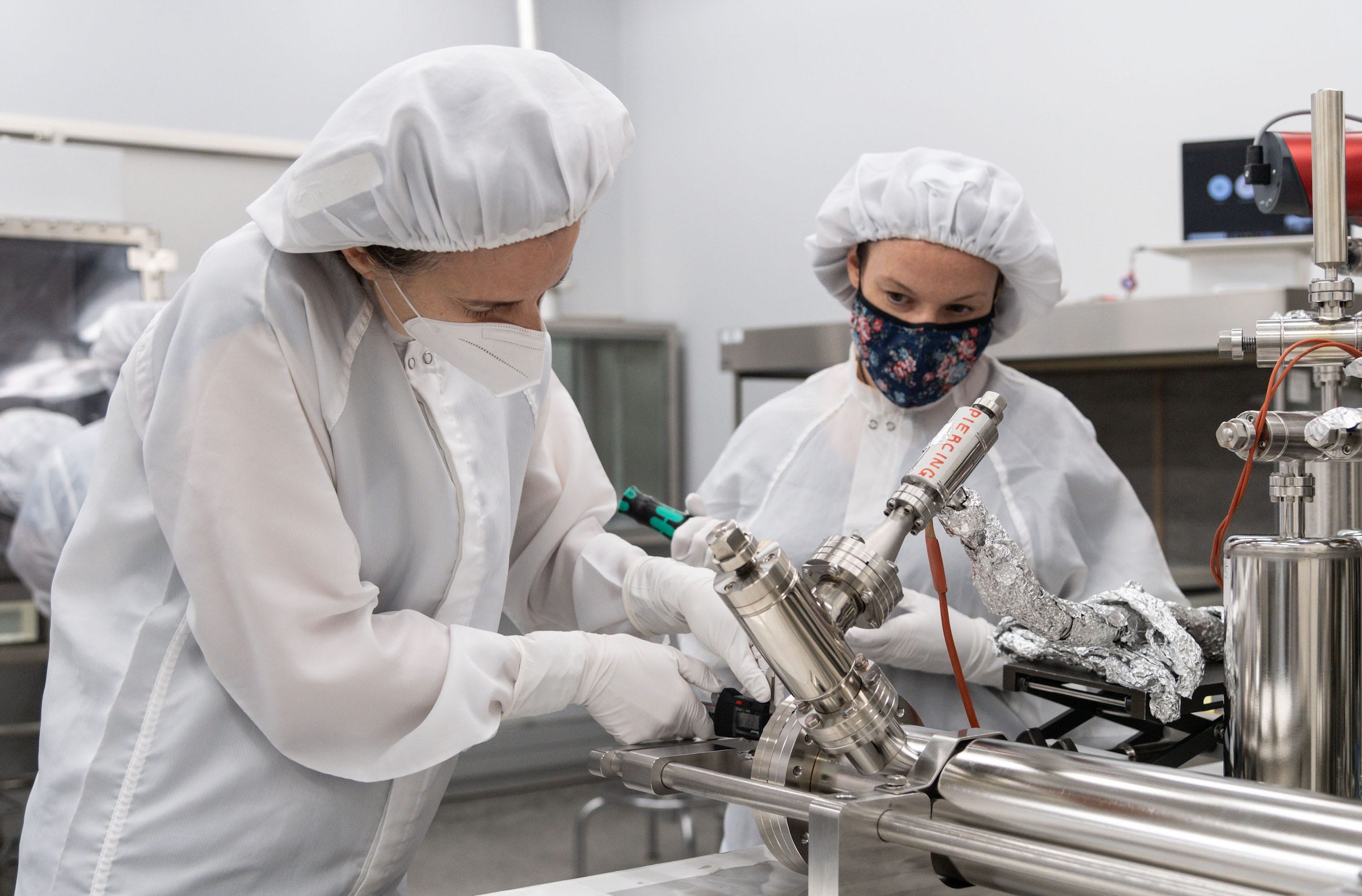
As part of funding awarded to 10 projects to develop technologies and instrumentation for future space science missions, the UK is funding two £50,000 proposals related to lunar exploration. The first proposal led by researchers at University of Cambridge and RAL Space is for developing miniature high-precision radio receivers to observe the early Universe from the most radio-quiet vantage point in the solar system that is the Moon’s farside. Such a receiver could debut on a future CubeSat lunar orbiter before being advanced and adapted for bigger missions. The second proposal, by Surrey Space Center and University of Surrey, is for determining the orbital feasibility of a lunar spacecraft studying our Sun’s outer atmosphere and the solar wind using Moon-enabled total solar eclipses.
More Moon
More than 20 European companies build ESA’s European Service Module part of NASA’s Orion spacecraft, the ride for future Artemis astronauts. The 15,000-kilogram European Service Module provides propulsion, water, oxygen, thermal control, and electrical power to Orion. For Europe, delivering the modules ensures at least three seats for their astronauts in Artemis missions to the NASA-led Gateway lunar station.
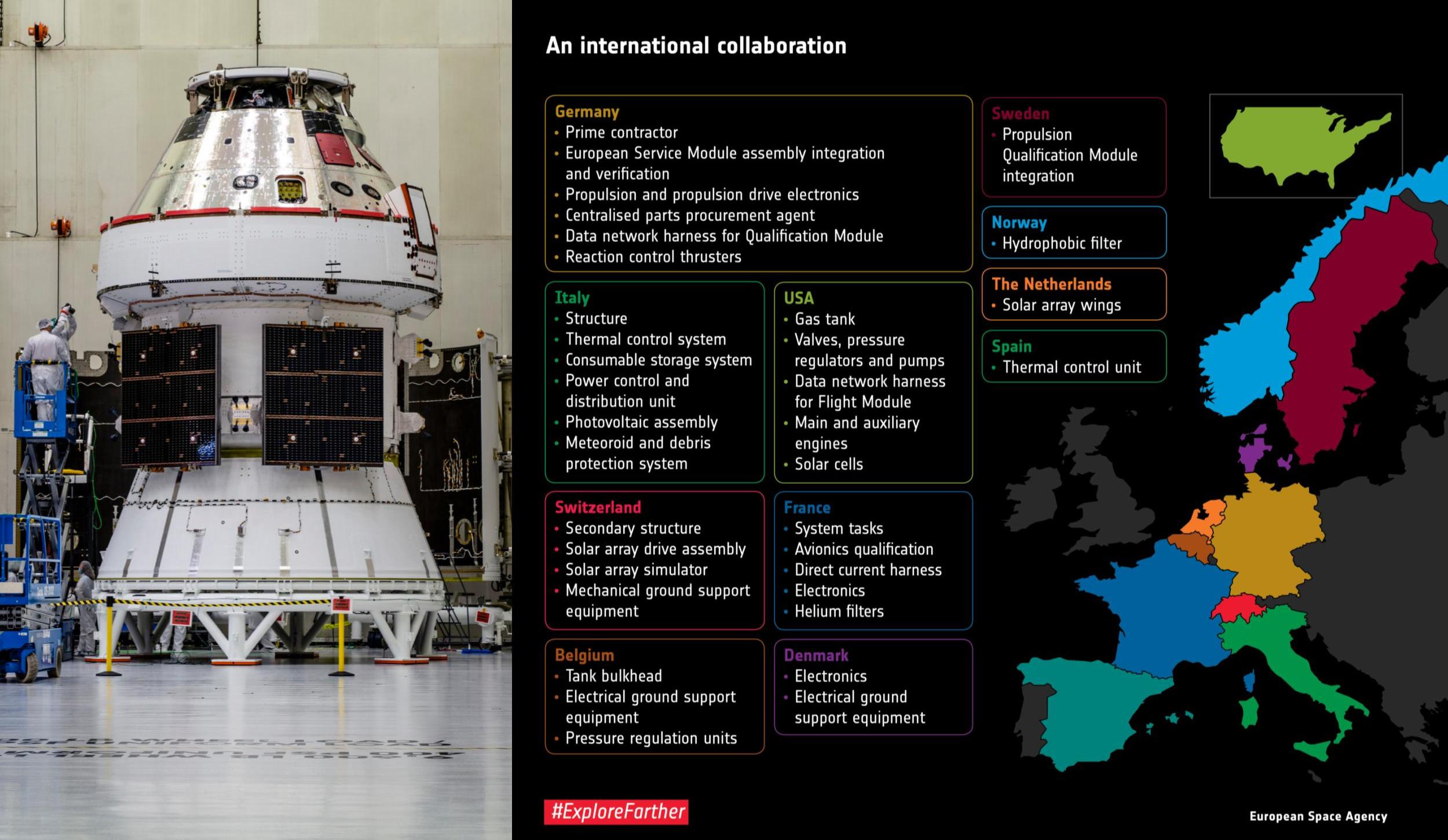
It’s nice when we come together and align our incentives to do great things.
Thank you Dr. Gordon Roesler, Arun Raghavan, Open Lunar Foundation, Epsilon3 and SWISSAPOLLO for supporting me and powering this edition of Moon Monday!
Everyone, I’m publishing this one-of-a-kind Moon exploration newsletter for free, with no ads. And it will stay that way. If you like my work, support me to keep it going.
